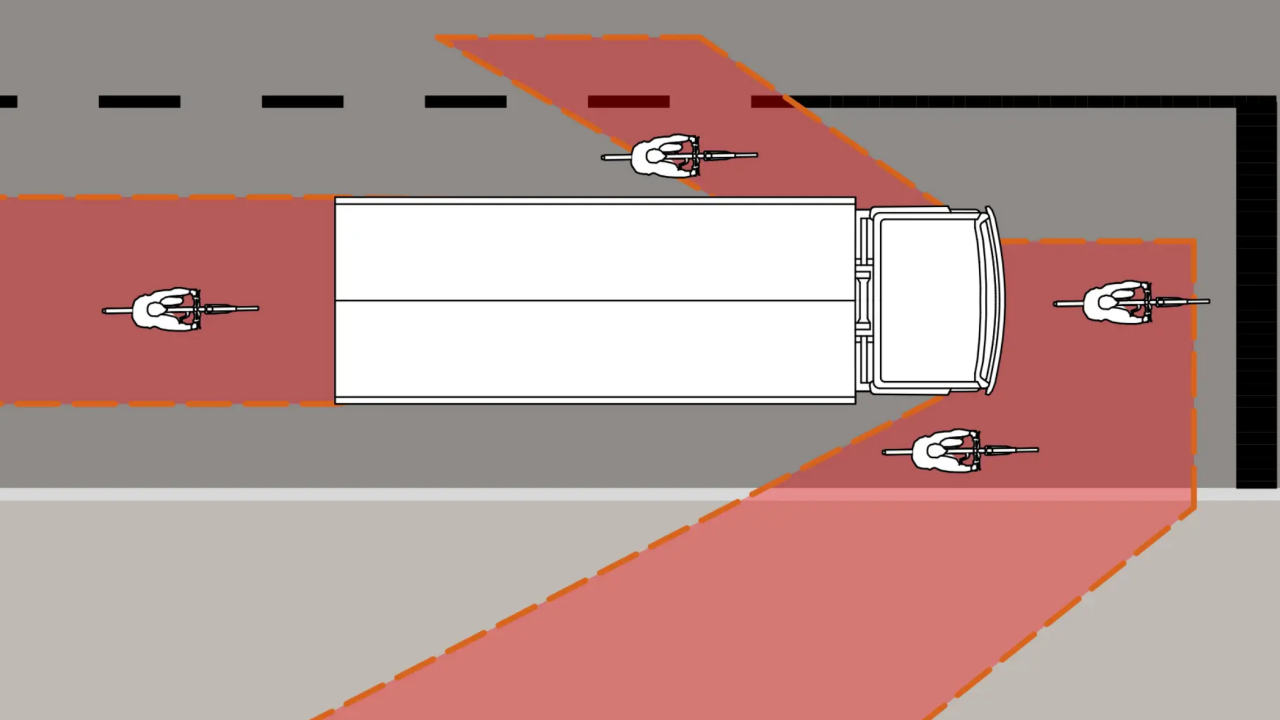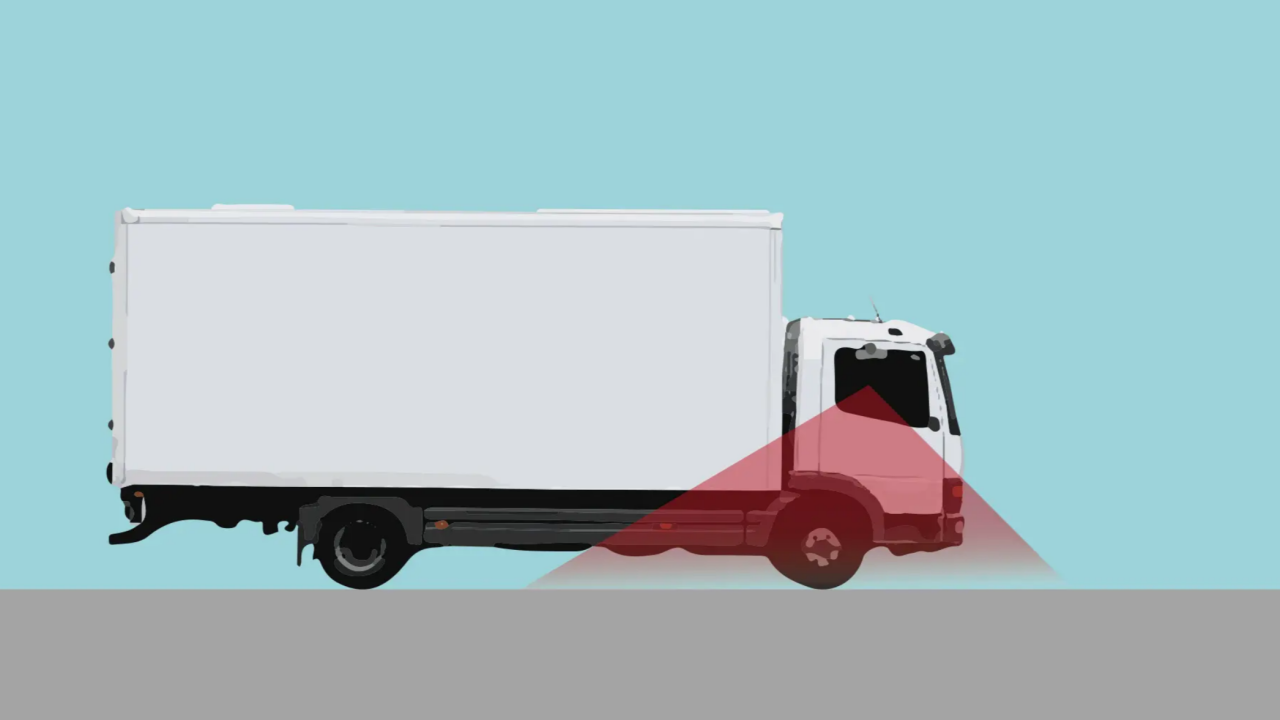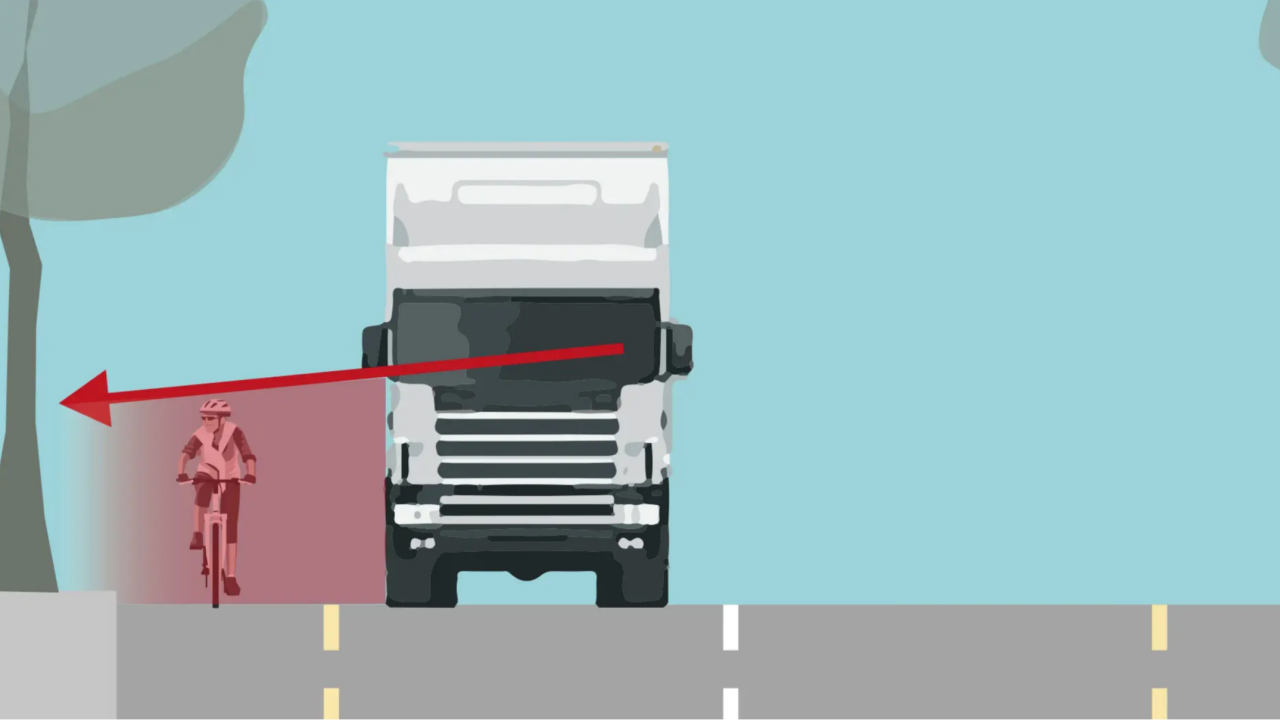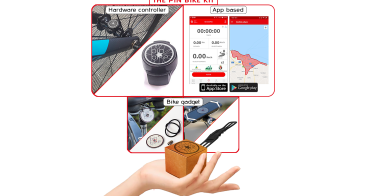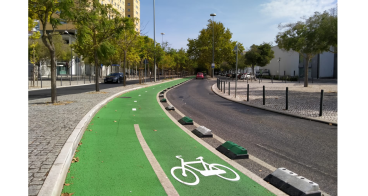Attention to blind spots: cyclists and heavy-weight vehicles sharing the road
The blind spot of heavy trucks is considered dangerous. However, there are some who say that the blind spot no longer exists. We looked into the matter.
"There is no blind spot on heavy trucks" writes the Berlin section of the General German Bicycle Club (ADFC) on its website. A properly equipped truck has six mirrors that allow for a view around the truck. It is essential for the all-round view that the mirrors are properly adjusted. Wide-angle mirrors are often covered during awareness campaigns to maintain a blind spot.
Is the blind spot still there?
Sergio Jörg, a truck driving instructor at the Koch driving school, says, "That's not entirely true. The blind spot still exists. It has only become smaller due to the different mirrors" He cannot imagine that these are often not correctly adjusted, "A truck is already difficult to manoeuvre, imagine that with poorly adjusted mirrors". Are the laws different in Switzerland? And should you believe the sympathetic ADFC or a truck driver who may only represent the interests of his industry?
Not all trucks are equal
The Federal Roads Office ASTRA writes on request, "Switzerland adopted the EU regulations in 2009, which means that the same provisions apply in Switzerland and the EU" . These are formulated in the Regulation on the Technical Requirements for Road Vehicles (VTS) under Article 112. It states that trucks between 3.5 and 12 tonnes must be equipped with a wide-angle external mirror or a wide-angle mirror in addition to the normal rear-view mirrors on both sides. Whether a truck also needs a front and ramp mirror depends on its weight or the height of the truck. A front mirror is mandatory from 7.5 tonnes. The ramp mirror is only mandatory for trucks under 7.5 tonnes if it can be installed at a height of at least two meters above the ground.
In short, trucks are different. And as a cyclist, you don't know whether in Switzerland or in the EU how many mirrors each truck has, unless you always know exactly which type it is.
Danger when turning right
Driving instructor Jörg lists other factors that influence whether cyclists are actually seen: "If the cyclist is racing by at the exact moment the truck driver is scanning from one mirror to another, the cyclist will remain undetected". This argument is also given by Toni Cimerman, who visits schools for educational purposes and invites children into the driver's cab. Cimerman cites the time lost during mirror changes as the reason why certain mirrors are actually covered for training purposes. It should also be noted that not only the cyclist is moving, but also the truck.
Trucks are particularly dangerous when turning right. "Every driving instructor drums this into his students" assures driving instructor Jörg. And anyway: "No one wants to be involved in such an accident" . Especially since they usually involve very serious accidents where cyclists or pedestrians are run over. "Anyone who experiences something like this is traumatised". But focusing only on the right side is also not enough: "Something can also happen on the left, especially if the truck has a lot of overhang. This is the part behind the wheel axis that swings out to the other side when turning". And then there is also the mandatory view in the direction of travel.
Trucks are a death trap
One thing is certain: trucks are still a deathtrap for cyclists. Pro Velo Zurich therefore strongly advises against considering the blind spot as no longer existent. Because if there is an accident, it doesn't really matter whether the truck driver was "just" inattentive. In any case, the worst consequences are borne by the cyclist.
Nevertheless, this warning will never reach all cyclists. Therefore, accidents in the blind spot can really only be avoided by one measure: The infrastructure for cyclists must be improved. For example, bike bags that are long enough are needed when turning off, so that cyclists can position themselves well in front of motorised traffic. Of course, the ideal would be as many cycle paths as possible that run separately from the other lanes. However, lighting systems that let cyclists start before the general green phase, so-called pre-green, would also bring a lot. And where there are no good alternatives, turning bans for trucks are needed. Pro Velo is committed to such solutions at all levels.
The author Andrea Freiermuth is Head of Communication & Events at Pro Velo Kanton Zurich. Pro Velo Kanton Zürich represents the interests of cyclists in the canton of Zurich. With over 6000 members, they are the largest regional Pro Velo association in Switzerland. Pro Velo ensures more space on the street, continuous bike routes, enough parking spaces, more safety and better interfaces with public transport. So that the bicycle is perceived as a fully-fledged means of transport.
Published on 11 April 2023.



